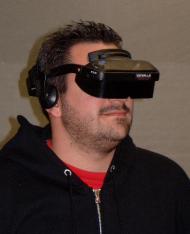Farewell mouse and keyboard?
Is it time to say farewell to our mice and keyboards? That is what Leap motion claims. In the past months, we have heard of many promising projects aiming to substitute mouse or keyboard input to a personal computer – an aspect of HCI discussed and researched for over a decade.
So what is the Leap? It is a USB device that allows us to interact with software on laptops and desktops, by sensing hand and finger movements in a very precise (claimed) way. Leap motion argues it is a breakthrough in HCI as it uses a mathematical approach to 3D, touch-free motion sensing and motion control software.
Leap motion also claims a limitless usage for this device, as stated on their website, providing a few examples:
- Artists can use The Leap to emulate a stylus or easily create 3D images.
- Anyone can use The Leap to interact with Windows 7/8 or Mac OS X by clicking, grabbing, scrolling and using familiar gestures like pinch to zoom in 3D space.
- Users pointing a pen at the signature line of a document to sign it in space.
- Engineers can interact more easily with 3D modeling software.
- Gamers can play more easily and many will modify with Leap in mind.
- Surgeons can control 3D medical data with their hands without taking off their gloves.
The Leap is currently capable for interacting with Microsoft or MAC platforms, with Linux to follow. Pre-orders are out, for 69.99 USD for a limited number. In addition, Leap Motion is willing to distribute free developer kits to qualified people, in order to promote the device and enable developers to “go for it”.
You can read all about it here. You can also check out their blog.



Follow Us!